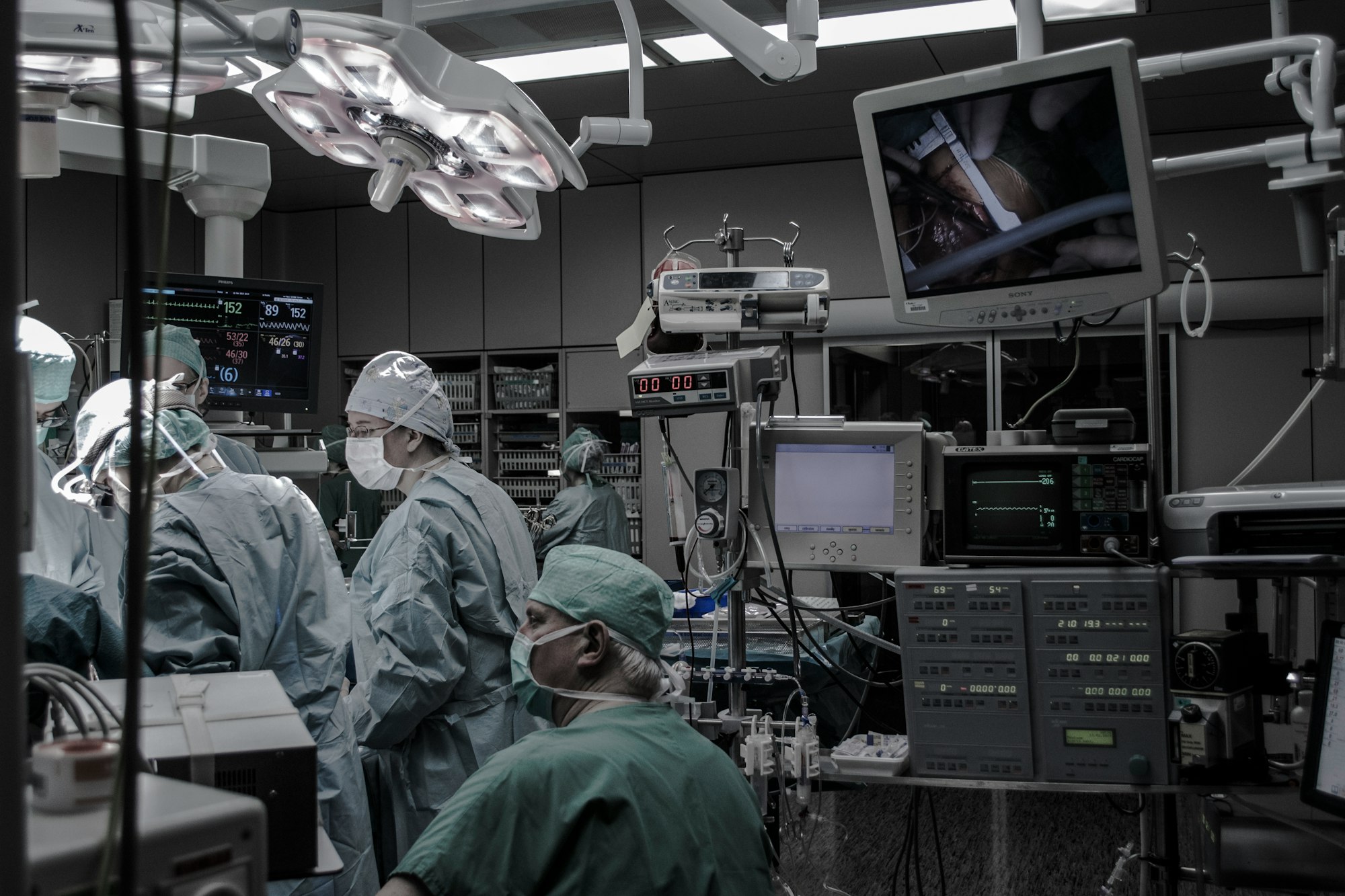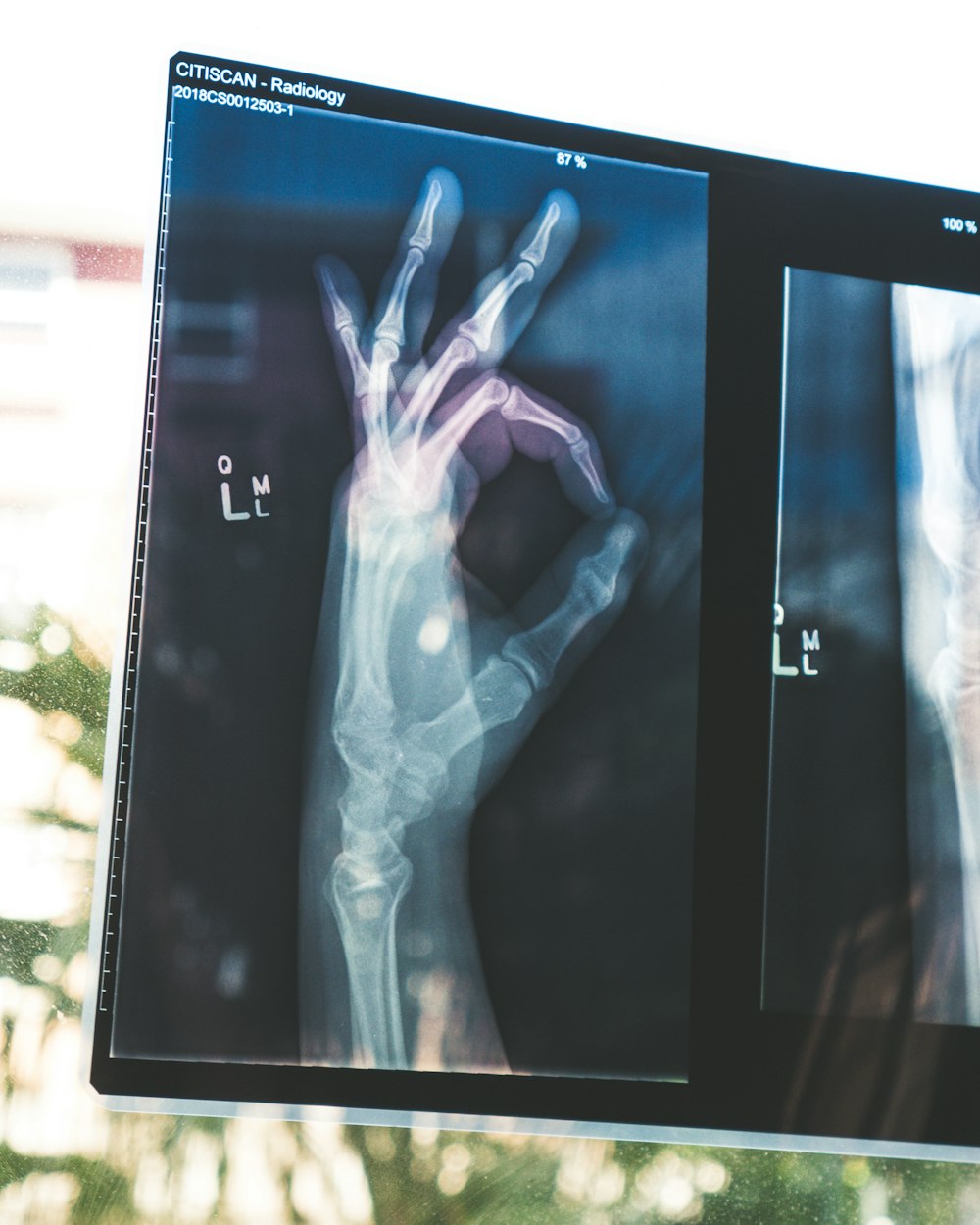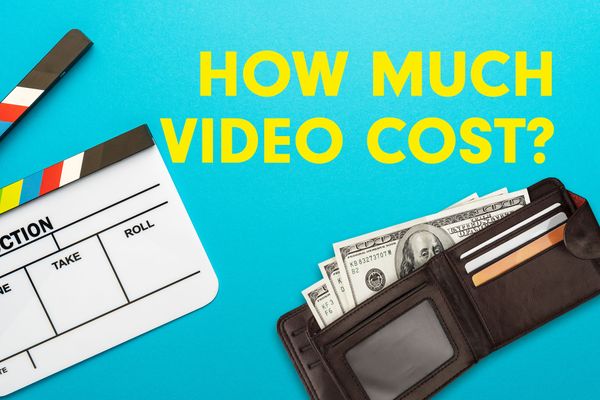Video for Healthcare Training & Communication: Tips & Ideas
Medical video production is a powerful tool that Health practitioners can use to educate others about various medical procedures, practices, and stories. With the right equipment and expertise, medical professionals can produce high-quality videos that effectively communicate important medical information.
Video production has become an increasingly popular method of educating medical students and patients about medicine. Medical video production involves creating videos that showcase different medical procedures and practices.
These videos are often used as a source of information for medical professionals looking to expand their knowledge base or share their experiences with others.
Some videos you could create to promote your expertise or clinic 👨⚕️:
- Patient testimonials video
- Patient education videos
- Pre-surgery video
- Post-surgery best practices
- Training video series for other medical professional
- Clarify a complex medical procedure
- Live surgery demonstration
- Innovation and new technology showcase
One of the most important aspects of video production for doctors is the editing process. Professionals use a variety of software programs to edit their videos, such as Adobe Premiere Pro or Final Cut Pro X. These programs allow them to add special effects, transitions, and other elements that make their videos more engaging and informative.
In addition to editing software, there are several pieces of equipment that are essential for producing high-quality medical videos. A good camera is crucial for capturing clear footage, while microphones can help ensure that audio is recorded accurately. Lighting equipment can also be used to create a professional-looking video.
When producing a medical video, it's important to keep in mind the audience you're targeting. For example, if you're creating a video for patients, it's important to use language they will understand and avoid technical jargon whenever possible. On the other hand, if you're creating a video for fellow physicians, it may be appropriate to use more technical language.
Another important consideration when producing a medical video is ensuring accuracy and reliability of information being presented. It's crucial to fact-check all information before including it in your video and citing credible sources where necessary.
Understanding the Role of Video in Healthcare Marketing and Education

Determine Your Specific Goals and Subject Matter for the Video to Create a Strategy that Aligns with Your Objectives
Before diving into video production, it's crucial to determine your specific goals and subject matter. This will help you create a video strategy that aligns with your objectives.
For example, if your goal is to educate patients about a particular medical procedure, then the subject matter should be focused on explaining the procedure in detail.
On the other hand, if your goal is to market your healthcare services, then the subject matter should highlight the benefits of choosing your practice over others.
To ensure that your video content resonates with your target audience, it's important to conduct research on their needs and preferences. You can do this by analyzing data from patient surveys or conducting focus groups. This will give you valuable insights on what type of content will be most effective in achieving your goals.
Once you have determined your goals and subject matter, you can start creating an outline for the video script. The script should be clear and concise while still conveying all necessary information. It's also important to consider how visuals can enhance the message being conveyed in the script.
Conduct a Cost Analysis to Determine the Budget Needed for Equipment, Resources, and Staff Required for Production
Creating high-quality videos requires significant investment in equipment, resources, and staff. Conducting a cost analysis will help you determine how much budget is needed for each aspect of production. We’ll help you create a budget. Medical video production cost range o range from 5000$ up to 50 000$.
When considering equipment needs, we’ll choose cameras that produce high-quality images and audio equipment that captures clear sound. Additionally, lighting equipment can make a big difference in overall video quality. Operating rooms are often very dark, we’ll make sure our camera sensors can capture every detail of a procedure.
Resources such as props or actors may also need to be considered depending on the complexity of the video content. Hiring professional voiceover talent may also be necessary if there are speaking parts involved.
Lastly, staffing needs must also be taken into account when determining costs associated with producing videos. Will you use your staff? Or patients?

Create a Schedule and Procedures for Each Step of the Production Process, Including Filming, Editing, and Search Engine Optimization
To ensure that your video production runs smoothly, it's important to create a schedule and procedures for each step of the process. This includes filming, editing, and search engine optimization.
When creating a schedule for filming, it's important to consider factors such as location availability and weather conditions. Additionally, scheduling talent or actors can be challenging if they have other commitments.
Editing is another crucial step in the process that requires careful planning. It's important to establish clear guidelines for how the final product should look and feel. This includes things like color grading, sound mixing, and special effects.
Lastly, search engine optimization (SEO) must also be taken into account when producing videos. This involves optimizing video content so that it ranks higher on search engine results pages (SERPs). To achieve this goal, keyword research must be conducted to identify relevant keywords for your target audience. Additionally, optimizing metadata such as titles and descriptions can help improve visibility on SERPs.
Choose the Appropriate Level and Types of Equipment and Programs Needed to Achieve Your Desired Outcome
Choosing the appropriate level and types of equipment is critical in achieving your desired outcome when producing videos. Depending on your goals and budget constraints you may opt for more professional-grade equipment or consumer-level gear.
Professional-grade cameras offer better image quality with more advanced features like interchangeable lenses while consumer-level cameras are more affordable but lack some features found in professional models.
Similarly software programs used in editing can range from free options like iMovie or Windows Movie Maker up to industry-standard tools like Adobe Premiere Pro or Final Cut Pro X which offer more sophisticated features at a higher price point.
Ultimately choosing equipment depends on what type of video you want to create - whether it's a high-quality, cinematic experience or a more casual and conversational video.
Tips for Creating Effective Medical Videos
Identify the Purpose of Your Video
Before creating any video, it is important to identify its purpose and ensure that it aligns with your practice's goals. Are you trying to educate patients on a particular medical condition or treatment? Or are you showcasing your practice's facilities and services? Knowing the purpose of your video will help you create content that is relevant and useful for your target audience.
Keep Your Videos Concise
When creating medical videos, it is important to keep them concise and to-the-point. Patients have limited attention spans, so focusing on one topic at a time will help them absorb information more easily. Instead of cramming multiple topics into one video, consider breaking them up into shorter segments that patients can watch at their own pace.
Use Visuals and Graphics
Medical concepts can be complex and difficult for patients to understand. Using visuals such as diagrams, charts, and animations can help simplify these concepts and make them more accessible. In addition, using graphics can also make your videos more engaging and visually appealing.
Ensure Accessibility for All Patients
It is important to ensure that all patients can access your videos, including those with hearing or visual impairments. Providing closed captions or transcripts for hearing-impaired patients is essential. For visually impaired patients, consider providing audio descriptions or using high-contrast graphics.
Consider Using Patient Testimonials
Patient testimonials or real-life case studies can add a personal touch to your medical videos. By sharing success stories from previous patients, you can build trust with potential new patients who may be hesitant about seeking medical treatment.
Include a Call-to-Action
Always include a call-to-action at the end of your videos. Encourage patients to take action by scheduling an appointment or seeking further information about a particular topic. This will help drive engagement with your practice and ultimately lead to increased patient satisfaction.
Planning Your Video Production: Budget and Schedule
Programs, Editing, and Strategy
Creating high-quality video content requires a lot of planning and preparation. Before you start filming, it's important to have a clear idea of your specific goals for the video. Are you trying to educate your audience on a particular subject matter? Or are you attempting to promote a product or service? Once you've identified your goals, it's time to start thinking about the resources you'll need.
In addition to editing software, you'll also need to think about the equipment required for filming. Depending on the level of production quality you're aiming for, this could range from simple smartphone cameras to professional-grade DSLR cameras with multiple lenses. It's important to choose equipment that is appropriate for your goals and budget.
Cost and Time Procedures
Creating high-quality video content can be expensive in terms of both time and money. That's why it's important to establish a clear budget before beginning any project. This will help ensure that you stay within your means while still achieving your desired results.
Another key consideration when planning your video production is time procedures. Filming can be time-consuming, especially if there are multiple takes involved or if you're working with actors or other talent who require direction. It's important to allocate enough time in your schedule for all aspects of the production process so that everything runs smoothly.
For surgery for instance, there’s no time for retakes, thus leaving enough time to the production crew ahead of the surgery to scout the location and setup before the shoot is important. Especially if you need to capture endoscopic and laparoscopic views since these machines often require special wiring or adaptors to properly record them.
Patient release form & authorization

Filming medical procedures with patients can be delicate. You’ll have to make sure you have all the proper release forms and authorization to do so. Have the patient put in writing his approval to participate and for how long the video will be used. Check with your medical lawyer for national laws on such matters. Once this is complete, you’re free to have our crew shoot and edit your content.
Maximizing Social Media for Video Distribution
Video communications can be a powerful tool for healthcare professionals to enhance training and education, showcase their services, and educate patients. However, creating high-quality videos is only half the battle. It's also important to distribute them effectively to reach your target audience. In this section, we will discuss how you can maximize social media for video distribution.
Social media channels such as Facebook, Twitter, Instagram, and LinkedIn offer an excellent platform for sharing videos with your followers. By leveraging these channels, you can share information about your videos in multiple locations and increase the chances of reaching a wider audience.
To distribute your video on social media effectively, it's important to optimize it for each channel. For example, Facebook users tend to watch videos without sound by default, so adding captions or subtitles can help increase engagement. On the other hand, Instagram users prefer shorter videos that are visually appealing and easily digestible.
Another way to maximize social media for video distribution is by partnering with influencers in your industry or niche. Influencers have large followings on social media and can help you reach a wider audience by sharing your content with their followers.
Additionally, paid advertising on social media platforms such as Facebook Ads or Twitter Ads can also be an effective way to distribute your videos to a targeted audience. You can set specific targeting criteria such as age range, location, interests and behaviors of the viewers who will see your ad.
Utilizing Your Website for Video Engagement
Educational videos can significantly improve patient education and enhance patient care. By incorporating video marketing into your website, you can provide patients with an engaging and informative experience that they won't soon forget. Here are some talking points to consider when discussing how to utilize your website for video engagement.
On-demand video content allows patients to learn about their treatment options at their own pace and convenience. This is especially beneficial for patients who may be dealing with a chronic condition or those who are unable to attend in-person appointments due to distance or mobility issues. By providing educational videos on your website, you can empower patients to take control of their health and make informed decisions about their care.
Live streaming of educational sessions can provide patients with access to expert knowledge from anywhere in the world. This is particularly useful for medical professionals who are looking to expand their reach beyond local communities. By utilizing platforms like YouTube Live or Panopto, you can connect with a global audience and share your expertise on a variety of topics related to healthcare.
A current study found that patients who watched free online educational videos had better knowledge retention and were more engaged in their own healthcare. This underscores the importance of using video as a tool for patient education and engagement. By creating high-quality content that is both informative and engaging, you can help patients feel more confident in their ability to manage their health.
In addition, incorporating video into your email marketing campaigns is a great way to boost open rates and increase participation from viewers. Including a link or embedded video in your email content can encourage recipients to click through and engage with your brand on a deeper level.
Enhancing Healthcare Training and Communications through Video
Testimonials from Subject Experts Can Showcase Your Expertise and Professionalism in the Industry
Video is a powerful tool that can help healthcare workers, providers, and professionals improve their skills and knowledge. One way to enhance your videos is by featuring testimonials from subject experts. These experts can provide insights into the industry that are valuable for those who are just starting out or looking to improve their skills.
For example, if you are creating a video about medical professionalism, you might feature a testimonial from an experienced doctor or nurse who can speak to what it takes to succeed in the field. By doing so, you not only showcase your own expertise but also demonstrate that you have access to industry leaders who support your work.
Positive Comments from People Who Have Used Your Product or Services Can Build Trust and Strengthen Your Brand
Another way to use video in healthcare training and communication is by sharing positive comments from clients who have used your product or services. This approach can be especially effective for building trust with potential customers or clients.
For instance, if you run a medical facility or hospital, you might create a video showcasing patient testimonials. These patients could share how they benefited from your services and how they were treated with compassion and care throughout their treatment. Such videos not only highlight the quality of care provided at your facility but also show that you value patient feedback.
Specialty Education Videos Can Demonstrate Your Quality Methods and Subject Knowledge to Students and Other Professionals
One of the most beneficial uses of video in healthcare training is creating specialty education videos. These videos can be used to teach students or other professionals about specific topics related to healthcare practices.
For example, if you run a medical practice specializing in dermatology, you might create a series of educational videos on skin conditions such as psoriasis or acne. By doing so, you not only demonstrate your knowledge of these conditions but also show potential clients that they can trust your expertise.
Addressing Negative Comments in a Professional Manner Can Show That You Value Feedback and Are Committed to Improving Your Services
Finally, it's important to remember that not all feedback will be positive. However, addressing negative comments in a professional manner can show that you value feedback and are committed to improving your services.
For example, if someone leaves a negative comment on one of your videos criticizing the quality of care at your hospital, you might create a response video addressing their concerns. In this video, you could explain what steps you are taking to address the issue and how you plan to improve moving forward. By doing so, you not only demonstrate your commitment to providing high-quality care but also show potential patients that their feedback is valued.
Improving Patient Education with On-Demand Video
Educational Videos for Improved Patient Care
Healthcare providers are always seeking new ways to improve patient care, and one of the most effective methods is through educational videos. These videos provide an interactive and visual learning experience that can help clients better understand complex medical concepts and procedures. In this section, we will delve into the benefits of using on-demand video to improve patient education.
Enhanced Learning Experience
The use of educational videos in medical education has been proven to enhance the learning experience for students. Medical students who watch these videos are better able to retain knowledge and recall information compared to those who rely solely on textbooks. This is because educational videos offer a more engaging way of presenting information that appeals to different learning styles.
Moreover, patients who watch these videos can also benefit from an enhanced understanding of their treatment options. By watching a video that explains a procedure or treatment option, patients can gain a better understanding of what they can expect during their treatment process. This helps them feel more informed and empowered about their healthcare decisions.
Showcasing Expertise
In addition to improving patient care, medical professionals can also use on-demand video as a marketing tool by showcasing their expertise. By creating high-quality educational videos that explain complex medical concepts in an easy-to-understand manner, surgeons and specialists can demonstrate their knowledge and experience in their field.
This type of content not only attracts new patients but also establishes trust with existing ones. Clients are more likely to choose a provider who they perceive as knowledgeable and experienced in their field than one who does not have such credentials.
Live Streaming for Free Online Learning
With the increasing popularity of online learning, live streaming is becoming an increasingly popular method for delivering educational content in real-time. Medical institutions are now offering free online courses where students can learn about various topics related to healthcare.
Live streaming allows students and other helathcare professional from all over the world to participate in these courses without having to travel or pay expensive tuition fees. It also provides an opportunity for medical professionals to share their knowledge and expertise with a wider audience, which can help them establish themselves as thought leaders in their field.
Using Testimonials and Specialty Education Videos to Build Trust

Video has become a powerful tool for healthcare marketing, as it allows medical professionals to showcase their expertise and services in a visually engaging way. However, understanding the role of video in healthcare education is also crucial, as it can be used to explain complex medical concepts and procedures to patients and other healthcare professionals.
One effective way to use video in healthcare marketing is by incorporating testimonials from satisfied patients. Positive comments from real people who have experienced your product or service firsthand can go a long way in building trust with potential patients. By featuring these testimonials in your videos, you can demonstrate your professionalism and the quality of your brand.
These videos can also be used on a dedicated page on your website or as snippets on social media platforms where your target audience hangs.
In addition to patient testimonials, specialty education videos are another effective way to build trust with clients. These videos can be used to promote patient engagement and improve health literacy by providing easy-to-understand information about conditions and treatments. For example, if you specialize in treating a particular condition or performing a specific procedure, creating an educational video that explains what the condition is, how it's treated, and what patients can expect during recovery can help alleviate anxiety and build trust.
It's important to note that when creating healthcare videos, accuracy is key. Make sure that all information presented is informative and complies with relevant regulations and guidelines. It's also important to consider the language used in the video - avoid using medical jargon or technical terms that may not be easily understood by the average viewer.
By leveraging the power of video in their marketing and education efforts, medical professionals can enhance their online presence and build trust with patients. In turn, this trust leads to improved patient outcomes as they are more likely to seek out treatment from someone they feel comfortable with.
Why Medical Video Production is Critical for Success in Healthcare Marketing and Education
In today's world, video has become a critical tool for healthcare marketing and education. With the rise of social media and on-demand content, physicians can use video to reach a wider audience and provide better patient care.
Effective medical videos require careful planning, budgeting, and scheduling. By utilizing social media platforms like Facebook and Instagram, healthcare providers can maximize their video distribution efforts while also engaging with patients in real-time. Yes, social media is part of the medical marketing game these days.
But it's not just about the technical aspects of video production. Medical professionals must also consider how they can use video to enhance training and communication within their organization. By creating on-demand educational videos, doctors can improve patient education and build trust with their audience.
Testimonials and specialty education videos are another way to showcase expertise and build credibility in the industry. These types of videos allow medical professionals to share success stories from clients or highlight unique procedures or treatments.
Dont hesitate to reach us for a Quote for your next video project.



